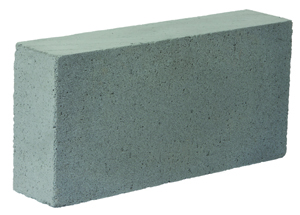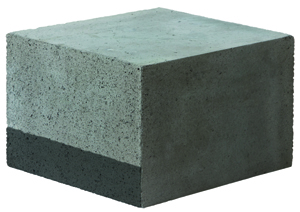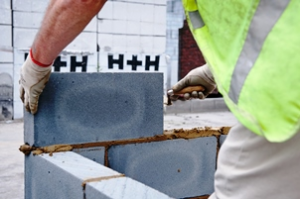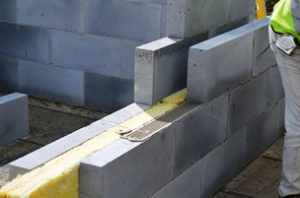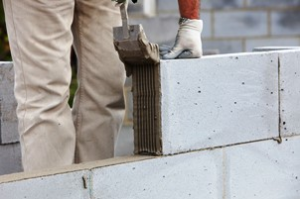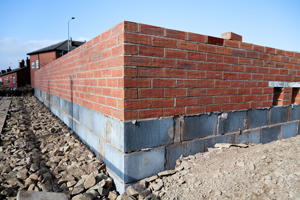H+H UK LTD
Suppliers of: Celcon concrete blocks lightweight concrete blocks concrete thin joint system
H+H UK LTD manufacture a wide range of Concrete Blocks and lightweight Concrete Blocks to suite all types on Block Construction.
Useful Resources:
- BIM files available on BPi
- H+H Academy: Online training and resources Click here
H+H is the UK’s largest manufacturer of aircrete products. We manufacture the market leading range of Celcon Blocks, including Foundation Blocks, Plus Blocks and the H+H range of aircrete products.
H+H aircrete products offer a complete building material that meets the requirements of the Building Regulations, with the flexibility to offer solutions to hospitals, schools, offices, industrial warehouses and housing (social and private).
Used in partition, separating and external walls (solid or cavity), firewalls and as an infill to framed construction, our products provide durability and fire resistance as well as superb thermal and sound insulation.
Main Product Ranges:
Celcon Blocks
Celcon Blocks in Solar, Standard, High Strength and Super Strength Grades are the most commonly used aircrete block in the H+H range. All Celcon Blocks are BBA certified, are fire resistant (100mm walls, up to 4 hours, 2 hours if loadbearing) and have been classified 0 surface spread of flame and non-combustible to Class A1 (the highest class).
Celcon Block Solar Grade
Celcon Blocks Solar Grade is principally used where enhanced thermal performance is required. With superior thermal conductivity Solar Grade Celcon Blocks are suitably loadbearing for two storey buildings and can be used below DPC.
Celcon Block Standard Grade
Celcon Blocks Standard Grade is BBA certified and has a compressive strength of 3.6N/mm2. Due to its all round performance, it is possible for a 100mm Standard grade Celcon Block to be used throughout a build, eliminating on-site confusion.
Celcon Block High Strength & Super Strength Grade
H+H’s Celcon Blocks High Strength Grade (7.3N/mm2) and Super Strength Grade (8.7N/mm2) are used principally where higher compressive strengths are required such as in the foundations and lower storeys of three storey buildings, piers under high vertical loads and in multi-storey buildings.
Celcon Plus Blocks
Celcon Plus Blocks are an alternative to the 440 x 215mm face format block and are suitable for the same applications. They are longer at 630mm long and come in a variety of thicknesses.
Celcon Foundation Blocks
Available in Standard Grade (3.6N/mm²) and High Strength Grade (7.3N/mm²), Foundation Blocks can be used to support 3 storey constructions. They are suitable for the support of solid or cavity walls, framed construction or suspended floors, including beam and block.
Jumbo Bloks
Jumbo Bloks are produced with the latest technology, offering a high degree of dimensional accuracy with sharp arises, which make them ideal for use with Celfix mortar.
Celcon Block Coursing Units
Coursing Units are produced from the same material as all H+H aircrete and are suitable for the same applications as conventional size Celcon Blocks, allowing consistency within the building fabric.
Celfix Mortar
Celfix Mortar is cement based and supplied as a dry, pre-mixed powder in 25kg bags. It has been designed to replace the traditional sand:cement mortar and is used with building with our Thin-Joint System. Celfix Mortar starts to set within 10 minutes of application and approaches full design strength in just 1 to 2 hours.
Is this the end of the road for modular MMC?
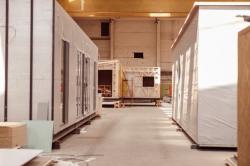
Offsite pioneer Modulous became the latest casualty of the current swathe of modular building company bankruptcies. This, despite the fact that Modulous, describing itself as a “kit of parts”, had none of the pricey infrastructure of factories that weighed down other volumetric companies such as Ilke Homes and Beattie Passive.
Pioneers and market disrupters are always risky ventures but the following points are particularly relevant in this instance:
1. There is nothing new in the idea of factory-built homes. And nothing new in the litany of failure of such enterprises.
2. Volumetric, factory assembled structures do not suit the economic model, the logistical challenges or the skills base of the UK housebuilding sector.
3. Constantly chasing the ideal of precise, factory-built home units results in repeated losses for investors. When those investors include the Government, taxpayers should be asking questions.
As long ago as 1926, architectural pioneer Walter Gropius speculated on a future where lower-cost housing would be made possible by “the manufacture by mass production methods of stock dwellings which are no longer constructed at the site but are produced in special factories”.
It’s a seductive vision. Muddy building sites replaced by clean, productive factories building homes with precision in quality-controlled settings. Repeated government-backed attempts to kick-start a modular construction industry looks to the mass production of vehicles as a model – but is that analogy convincing?
There are numerous problems with the factory-built homes vision of MMC, but let’s just focus on one – the financial model.
Factory-built homes need factories. Factories involve huge investment and require a reliable and consistent market for their products. UK housebuilding, with its near total reliance on consumer confidence, has simply never provided that degree of consistency.
In its review of the modular housing sector “Modern Methods of Construction – what’s gone wrong?” the Built Environment Select Committee looked for answers from, among others, Homes England which was keen to defend its significant investment in modular factory companies. The conclusion of this scrutiny was summarised in January this year by Chair Lord Moylan: “The Government needs to change tack. Simply throwing money at the sector hasn’t worked.” Quite.
A problem of presentation?
Part of the problem is with the presentation of MMC as a concept. Modern does not necessarily equate to pre-assembled and Method does not necessarily mean factory-based house units. The accepted definition of MMC (following on from the Farmer Report) is based around seven categories and only Category One requires the use of factory-built entities.
As Lord Moylan indicates, government funding whose objective is to deliver a greater volume of high-quality homes, needs better targeting, informed by a much deeper understanding of the structure of the UK housebuilding sector. Surely the Government’s role should be to stimulate the market and invest in new social housing, but be less enthusiastic in trying to dictate how new homes should be delivered.
H+H has always supported innovative approaches to house construction – our own Vertical Wall Panels and i-House System represent a strong commitment to new concepts and radical ideas. The difference is that these initiatives are evolutionary, rather than revolutionary.
The Built Environment Select Committee acknowledged the success of much Category Two MMC innovation (where our Vertical Wall Panel solution fits), and of the remaining five categories. That recognition absolutely supports the principle of evolutionary change.
Rather than going through another expensive loop of financial support for a delivery model that has proven so problematic, we would strongly advocate for a government that takes the time to really understand the housebuilding supply chain; focuses on creating an economic environment in which housebuilding can grow to meet demand; and leave the mechanics to the industry itself.
H+H How Strong is aircrete?
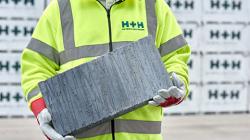 H+H aircrete blocks are routinely tested for their compressive strength in our factories, using UKAS approved testing procedures.
H+H aircrete blocks are routinely tested for their compressive strength in our factories, using UKAS approved testing procedures.
It is no surprise to see that blocks manufactured today easily pass the compressive strength tests, but we thought it would be interesting to see just how long this strength lasts.
Our Pollington manufacturing plant was built of H+H aircrete blocks over forty years ago, so we took the opportunity to test some of the blocks that have been supporting the walls of the factory throughout that time.
And while we were there, we also tested blocks that had been used to build a wall left entirely exposed to the elements (not a practice we recommend).
And finally, we soaked one of our blocks for 24 hours in a tank of water and then tested it.
We were delighted (but not surprised) to see that all of the blocks easily passed the compressive strength test. The 45-year block was considerably stronger than it had been manufactured to be half a century ago – demonstrating that neither age nor bad treatment causes our blocks to lose their strength.
H+H manufactures a range of aircrete blocks with different characteristics. To check the thermal insulation and compressive strength of each product, go to the product section of the website.






